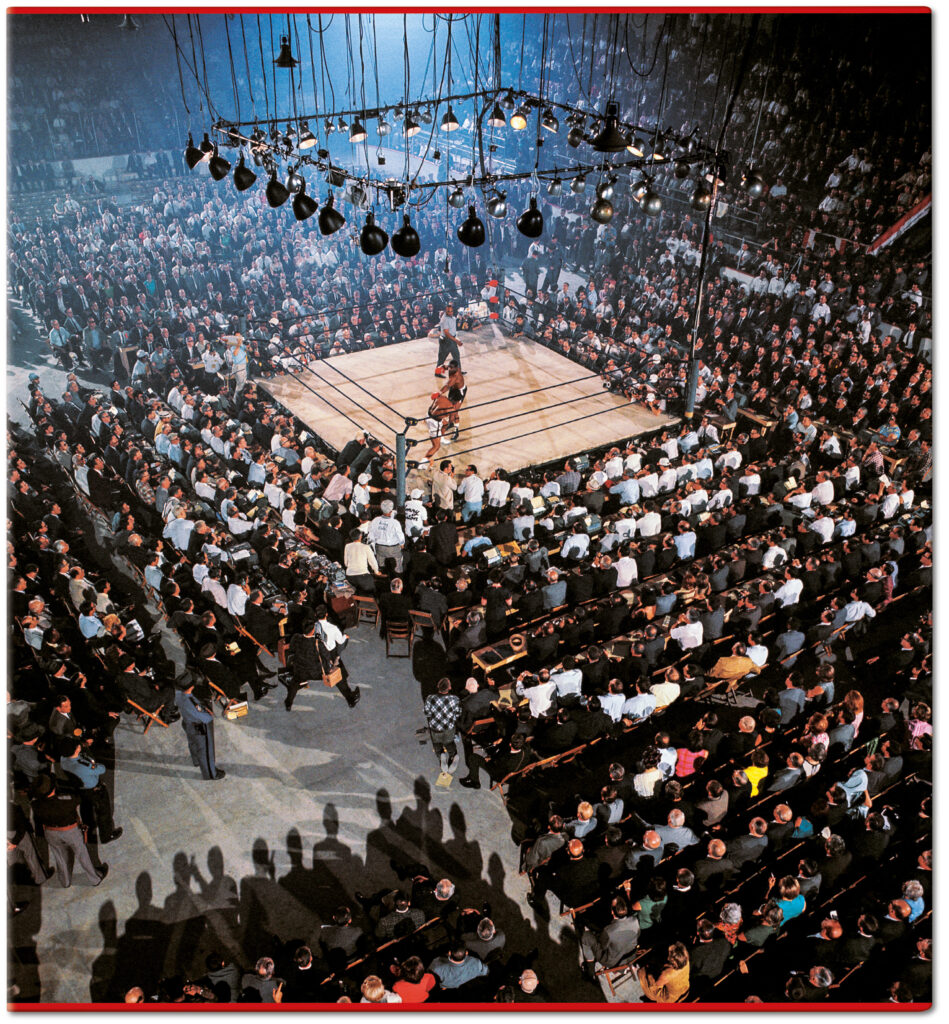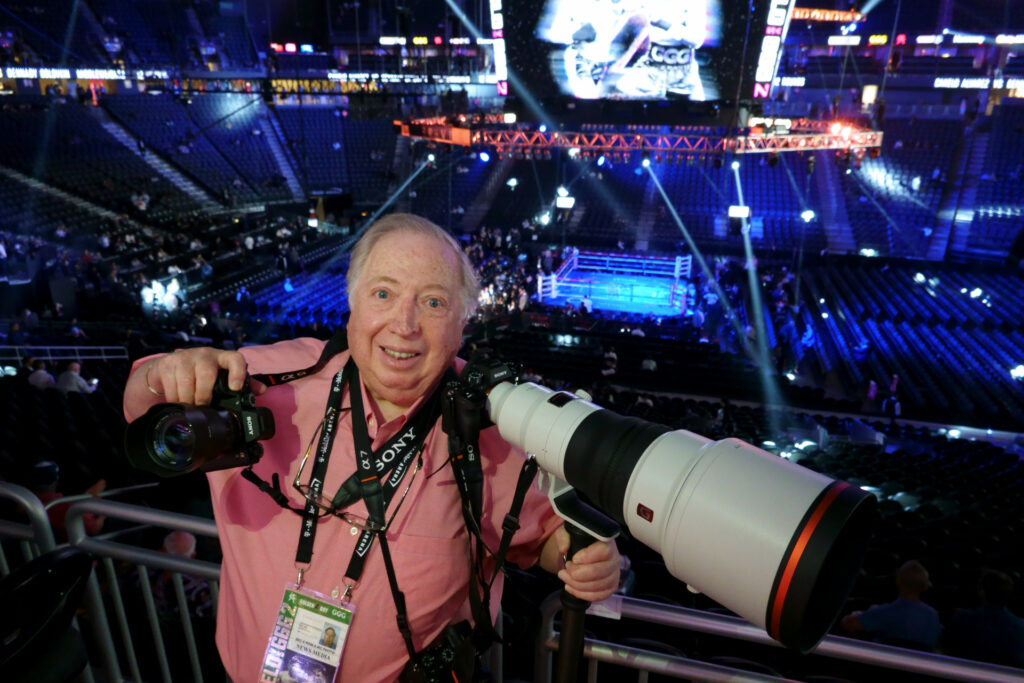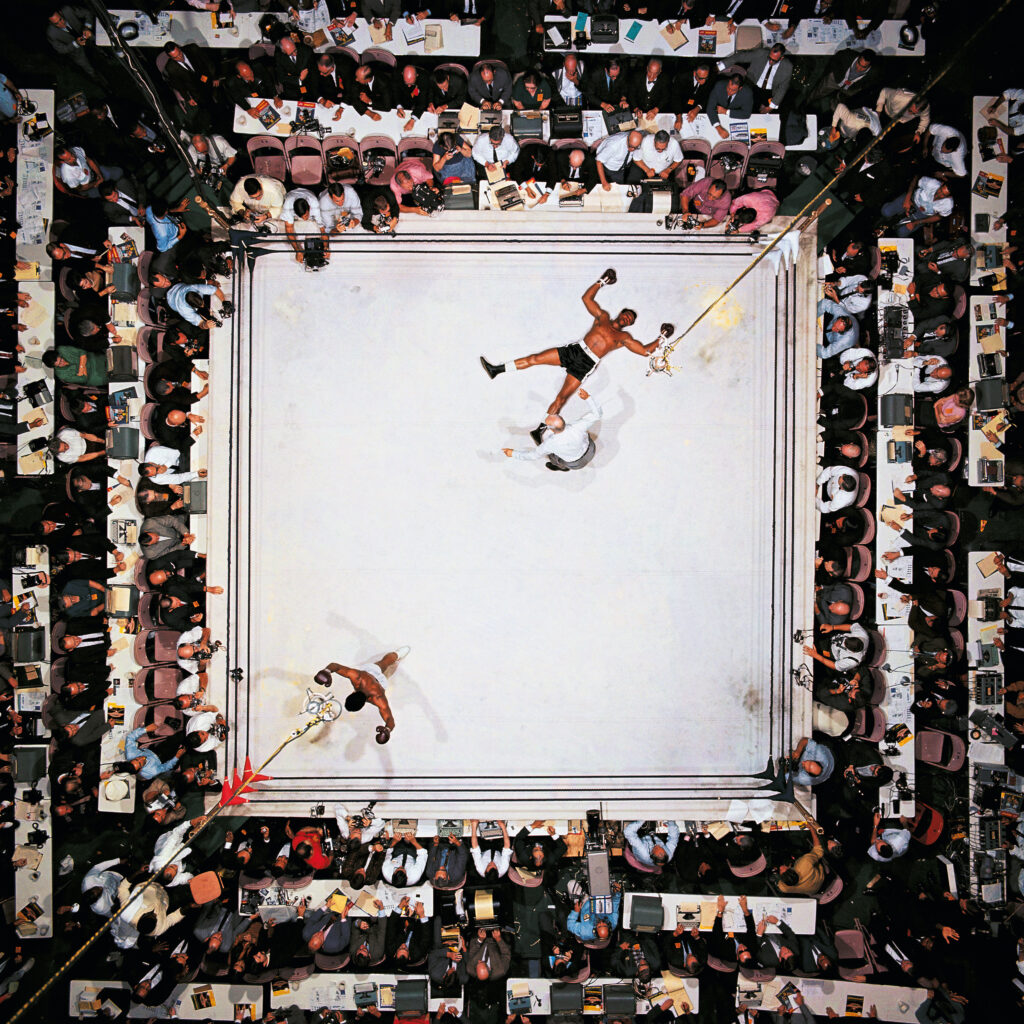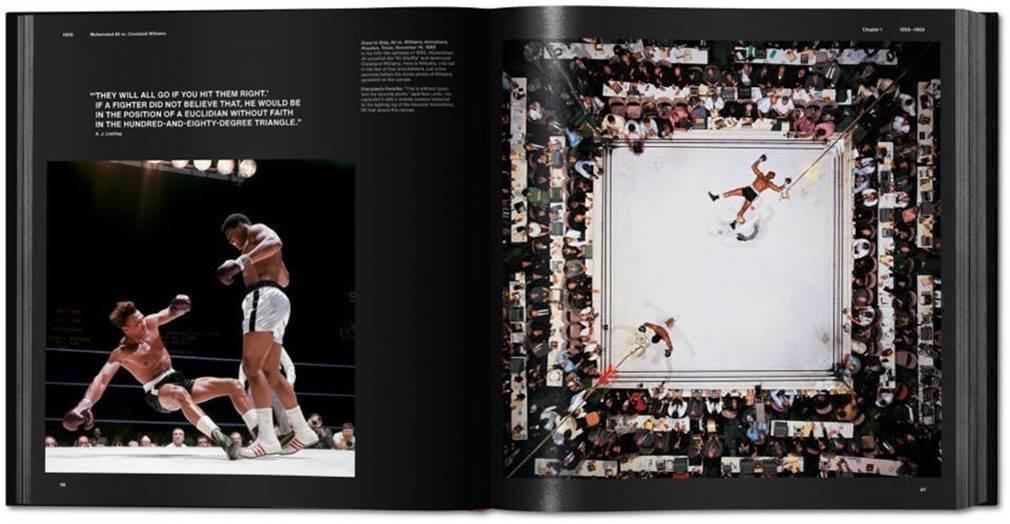As his new book Leifer. Boxing: 60 Years of Fights and Fighters is published by Taschen , legendary photographer Neil Leifer talks Boxing Social’s Luke G. Williams through three of the volume’s most memorable shots including that unparalleled photo of Muhammad Ali’s KO of Cleveland Williams in November 1966.

is available now from Taschen , priced £800 . Copyright: Neil Leifer.
Floyd Patterson vs Ingemar Johansson 1: Yankee Stadium, Bronx, New York, June 26, 1959:
“This was where it all began for me. Yankee Stadium could seat 60,000 people but they probably had about 30,000 there that night – it was maybe half full. The cheapest tickets – which in America they call the nosebleed seats – were as far from the ring as you could possibly be and cost five dollars. Myself and my friend John Iacono, who later became a very good photographer for Sports Illustrated and shot a lot of boxing, both bought tickets. We were probaby four or five hundred feet from the ring. But that view gave me a chance to see the whole scene. I had a camera, but I didn’t have any sort of telephoto lens or anything like that. The shots I took give you the sense of an outdoor fight in a ballpark. They were lovely. I was very happy with the pictures. No one published them at the time but I always liked the pictures I took that night and that was the very beginning of my career. I started trying to sell my pictures with really no great success at all at first but I was able to get a credential for the second Patterson-Johansson fight from a small publication and for their third fight I was on the apron for Sports Illustrated in 1961. I was on my way.”

Photo: Courtesy of Neil Leifer.
Muhammad Ali vs Cleveland Williams, Astrodome, Houston, Texas, November 14, 1966:
“This is still my favourite picture ever. It’s the only one of my photographs that I have hanging in my apartment. I hang it diamond-shaped with Williams at the top. Photographers had been putting remote cameras over the ring since back when Joe Louis and Sugar Ray Robinson were fighting, so I didn’t invent having a camera over the ring. In fact in the book you’ll see I also took a photo above the ring in Miami in 1961 when Ali won the title against Liston, although that was taken with natural light not strobes so the quality doesn’t come close to this one. What was significant about this shot is that before this fight you could never put a camera directly over the middle of the ring – whether the fight was at Wembley or Madison Square Garden or in Los Angeles, Chicago or Miami – because the ring lights were only 20 or 25 feet over the ring at most. When the Astrodome was being built I actually worked on a construction story for Sports Illustrated magazine about the building of this new arena – the first of its kind in the world, I think, where you could play football and baseball indoors. They used to call it ‘the eighth wonder of the world’ when they were promoting the Astrodome. Anyway I went down to Houston two or three times when the stadium was being built and I remember realising that getting the sort of shot I eventually got was possible because the lighting rig was so big and so wide in terms of the diameter. It operated like an elevator – they called it a gondola – and it would be high up in the ceiling for a football or a baseball game but they could bring it right down to 20 feet above the ground if they wanted to. Because the rig was 80 feet across if it was that low there would be no way you could see two thirds of the ring from that height. So for a fight they would put it 80 feet over the ring. When I realised that, I knew that if you put a normal lens up there you would have the perspective to get the whole view you see here in the shot. It was suddenly possible to do a picture that couldn’t have been done before. It was really as simple as that. I got lucky and got a great knockout of course, but the fact is that would have been a great picture even without the knockout. The knockout makes it even better. Plus, not only was it a great knockout but you also have the fact the beaten fighter is on the canvas looking up at the camera and the winner is walking away with his arms up. The next fight I shot – which you can see on the next page of the book – is of Ali fighting Ernie Terrell in the Astrodome, it’s just the two fighters touching gloves and it’s also a great picture. I don’t think you could have got this picture anywhere else in the world until the Houston Astrodome was built. There was nowhere else where you could put a camera to get a perspective like that.”

captured by the masterful Neil Leifer. Copyright: Neil Leifer.
Mike Tyson portrait, Time Magazine cover, June 27, 1988:
“This photo was taken about a week or so before the Tyson-Spinks fight for the issue of Time magazine that previewed the fight. I wanted to do a portrait of Tyson. I had a couple of meetings with the author of the article and we talked about what we wanted. We wanted a portrait that was powerful and Tyson had such a great face. Time had a big fat logo so you always had to worry about where you were going to put the billing. I had the idea of using the glove from the beginning, of that being the place where they would put the type on the cover. Tyson was a great subject. I spent the whole day with him when I shot that cover. I went down the boardwalk in Atantic City with him and watched him catching pigeons on the beach. Then he went clothes shopping – a photo of him trying on an expensive suit is also in the book. As long as he kept buying clothes I kept shooting and he spent a lot of money, about $10,000 I think! If you’re photographing the average basketball player in the NBA after 10 minutes their patience runs out but Tyson gave me all the time in the world. It was an honour to be on the cover of Time magazine and Mike knew that and was very cooperative. I mean how many boxers have been on the cover of Time magazine? Not many, Muhammad Ali was, Joe Louis and Rocky Marciano were too, but not many, especially these days.”

Copyright: Neil Leifer.
Main image: ‘Leifer. Boxing: 60 Years of Fights and Fighters’. Photo: Taschen.